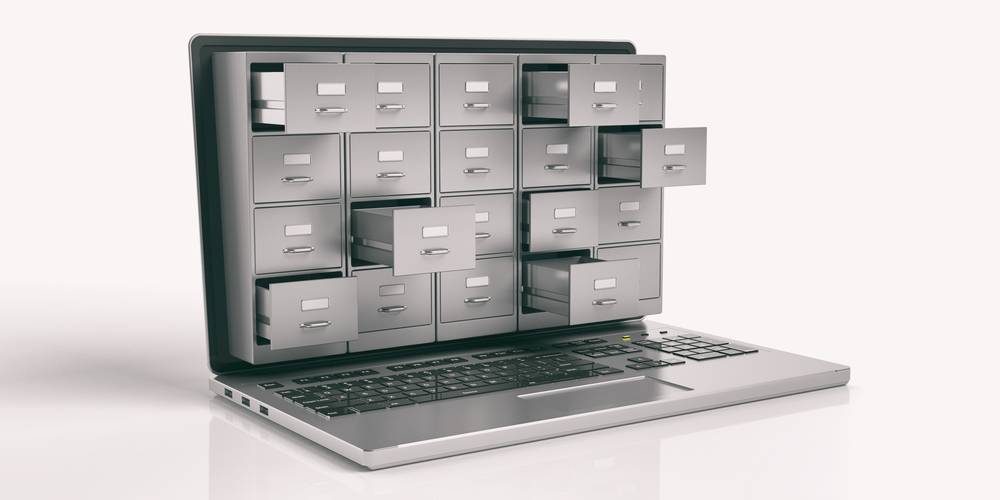If you run a business, data is at the heart of every decision that you make. Removing a poor selling item from your inventory is driven by your financial data. Hiring the newest member of your staff is driven by the data found on their resume. Simply put, data is vital.
Businesses that have successfully transitioned to remote work have brought their data—and data management strategies—with them. As a business owner, you have the most intimate knowledge of your business. Knowledge of your finances is just as crucial as your knowledge of your employees. The best data is all-inclusive—it establishes a unity of fiscal and emotional intelligence. By utilizing your business’s “dual-threat” data, you can make the most informed decisions possible.
In 2020, informed decision making is more difficult than ever. How do you make sure the next—and most crucial—decisions you make aren’t hampered by the shift to a remote office environment? As your data moves home with you, make sure that it’s covered by a cohesive data management strategy.
Context Is King
In an interview with HBR, Didier Elzinga, CEO of Culture Amp, discusses how data provides insight into strategic decision making. He says: “Data is the pathway to context.”
As the captain of your proverbial ship, you see your business’s data in a context that others do not. The same goes for your top executives. A decision that appears lucrative in the eyes of your accounting department may wreak havoc on your sales department, or vice versa. Maintaining a balanced approach and overarching vision is driven by streamlined data management.

Every decision you make in a time of crisis seems amplified. During your decision making process, remember this: not every bad outcome is due to a bad decision. More often than not, bad decisions are born from bad procedures. Make decisions that help your bottom line without overlooking the needs of the people directly affected. Your employees make decisions every day too—make sure that they have an effective and empathic process to emulate.
In the short term, a decision that yields a profit despite taking a tumultuous emotional toll may seem necessary. Given the state of the American economy, it’s easy to rationalize this trade-off. In the long term, however, an environment where decisions lack emotional accountability is a house of cards one strong gust away from demise.
With employees working remotely, the need for individualized direction and attention from your top decision-makers looms large. This may be the first time that you have been able to digitally access your employees’ workflow, so make sure you utilize this data to its fullest extent.
Ease of Access Is a Priority
The importance of your data is undeniable. The only thing more critical than your data is your ability to access it. Moving out of the office has made this a complicated undertaking, but nevertheless, data accessibility needs to be the backbone of your home office.
Not everyone in your organization is an IT professional. Odds are, the vast majority of your employees wouldn’t fit that criteria. In order for your data to best serve your business needs, it needs to be organized and readily available to people in all of your business’s roles—not just those with skills akin to technological sorcery.
As a business owner, you need access to all of your data, all the time. But, the same doesn’t apply to all of your employees. This isn’t to say that transparency and collaboration aren’t core pillars of a productive work environment—they are. What this means is that you need to make sure the right data is accessible to the right people at the right times. Not everyone needs access to everything to get their job done.
If an employee does need access to restricted data in order to complete an assignment, it’s important that they be able to be granted access. If it turns out this data was immaterial to them after all, you have the opportunity to explain why. Your employees will benefit from your big-picture insights, and you’ll learn by seeing things from their perspective, too. Data accessibility needs are dynamic—make sure that you’re able to adapt on the fly.
Your Data In One Place
Businesses similar in size to yours have routinely relied on on-premise storage systems. In the age of the remote office, that has to change. In fact, there is a 60% chance that your business will be forced to cease operations if it suffers a major data loss.
Even if your business wards off data loss, data disorganization can still wreak havoc on your bottom line. Time spent searching for documents and information kills productivity. No matter what the needs of your business are, having all of your documents in a centralized, cloud based location will serve as a positive change for the long haul, even if your employees return to working under one roof.

It’s not just about your raw financial data either—make sure a coordinated system of communication is in place for you and your employees to discuss the context of your data. Additional data gathered about your employees work habits, insights, and decision-making skills will allow you to help them succeed in their respective roles. This type of balanced data is at the heart of successful businesses.
In the age of the decentralized workforce, data centralization is more important than ever. Working from home shouldn’t make you feel disconnected—it should make you feel empowered. You have the tools at your disposal to run your business anytime, anywhere.
The way you work has shifted—now is a better time than any to give your operations an overhaul. Put your data to work by establishing a virtual, connected space for you and your employees.






